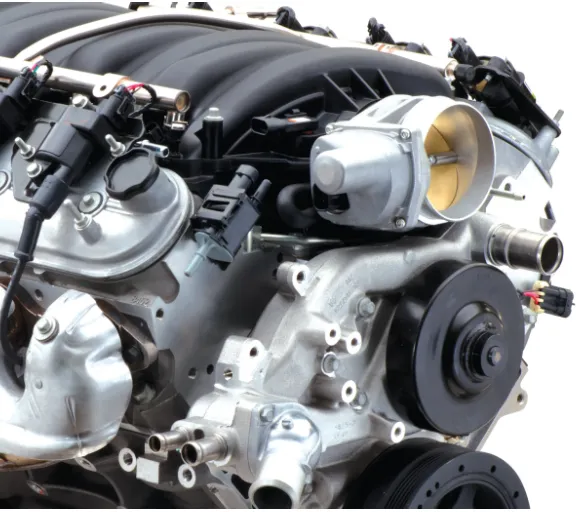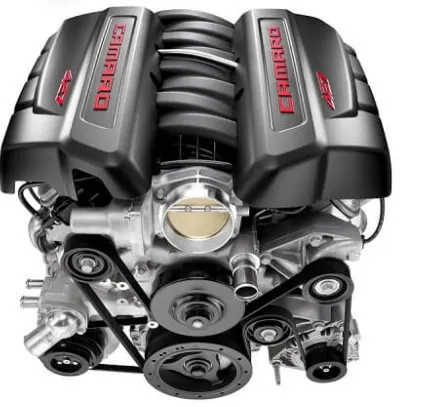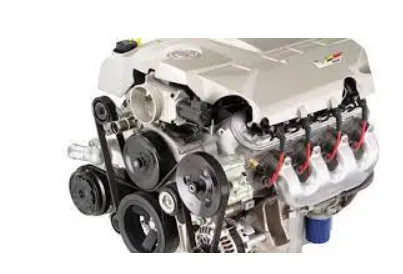Mon - Fri: 8am - 5pm, Sat - Sun: Closed

6-36 Month Warranties
We Ship Local.
Hablamos Español.
Connect with
GM GEN III V8 Engine Specifications
GM GEN III V8 Engine Specifications
How does an engine become legendary? The GM GEN III V8, introduced in the late 1990s, redefined performance, efficiency, and reliability across a range of GM vehicles. From sports cars to heavy-duty pickups, this engine family became a symbol of power and durability.
Designed with a lightweight yet robust aluminum construction and advanced engineering, the GEN III V8 changed the game for American V8 engines. Its impact continues to shape the automotive world, making it a favorite among enthusiasts and mechanics alike.

Overview of the GM Gen III LS Engine Specifications
The Gen III V8 made its debut with the LS1 in the 1997 Chevrolet Corvette, signaling a major shift in GM's performance engineering. This engine wasn't just about adding more horsepower—it introduced a new level of efficiency and durability that set it apart.

Featuring an all-aluminum block to reduce weight and enhance heat dissipation, the LS1 brought several cutting-edge innovations, including coil-near-plug ignition and an improved block design. With a displacement of 5.7 liters and an initial output of 345 horsepower, later increased to 350 horsepower, this engine quickly gained a reputation for its high-revving power and reliability.
Key Specifications of the GM Gen III V8 Engine

The GM Gen III V8 engine series established a new benchmark for performance and engineering excellence. The LS1, the first in the series, featured a 5.7-liter displacement and an output of 345 horsepower, later increased to 350 horsepower.
With 350 lb-ft of torque, this engine delivered exceptional acceleration and efficiency. Its lightweight aluminum block and heads contributed to improved vehicle handling while maintaining structural integrity. Subsequent versions like the LS6 and LS2 built on this foundation, incorporating enhanced airflow, higher compression ratios, and more aggressive cam profiles to extract even more power.
One standout feature was its deep-skirt engine block, which increased rigidity and minimized vibrations. The coil-near-plug ignition system ensured precise spark delivery, optimizing both fuel efficiency and throttle response. These design choices made the Gen III V8 a powerhouse in both stock and modified applications
Variants and Evolution
The Gen III engine family expanded quickly after the LS1, introducing several high-performance variants that left a lasting mark on GM’s lineup. The LS6 arrived in 2001, primarily featured in the Corvette Z06 and later in the Cadillac CTS-V. Initially rated at 385 horsepower, refinements in intake design and camshaft tuning pushed its output to 405 horsepower.
These developments highlighted GM’s ability to refine and push the limits of its existing engine architecture. Each iteration improved upon the last, enhancing efficiency, power delivery, and adaptability across different vehicle platforms. Whether in sports cars or luxury sedans, the Gen III V8 remained a dominant force in performance engineering.
Performance and Innovations
The Gen III V8 engine family represented a significant leap forward in power and efficiency. One of its most defining traits was its exceptional power-to-weight ratio, achieved through an all-aluminum construction that reduced overall vehicle weight.
The coil-near-plug ignition system eliminated traditional spark plug wires, ensuring more reliable ignition timing. Later models incorporated drive-by-wire technology, allowing for precise throttle response and smoother acceleration. This generation of V8s was also designed to meet stricter emissions standards while maintaining top-tier performance.
Its adaptability made it a favorite among both casual drivers and performance enthusiasts. Whether powering a daily driver or a heavily modified race car, the Gen III V8 proved to be one of the most versatile engines GM had ever produced.

Impact and Legacy
The GM Gen III V8 engine redefined the modern V8, influencing both factory production and the aftermarket industry. Known for its ease of modification, it became a staple among tuners, race teams, and performance shops worldwide.
Beyond sheer power, it set new standards for efficiency and durability. Even today, the LS engine series remains highly sought after for engine swaps and high-performance builds, proving its long-lasting influence on automotive engineering.
Comparison with Other Engines
Compared to previous GM engines, the Gen III LS series introduced a more compact and efficient design without compromising power. The use of aluminum blocks and heads reduced weight and improved heat dissipation, setting it apart from older, heavier cast-iron engines.
Against competitors like Ford’s Modular engine series, the LS engines stood out for their straightforward design, affordability, and incredible tuning potential. These advantages cemented their status as some of the most adaptable and widely used V8 engines in history.
Future and Continued Development
As GM continues to evolve its engine technology, the legacy of the Gen III V8 remains strong. While modern advancements push for greater fuel efficiency and hybrid integrations, elements of the GEN III design still influence high-performance models today.
With ongoing innovations in engine management and fuel efficiency, the core principles of the Gen III V8 live on, ensuring its place in GM’s history as one of its most significant powerplants.
The Final Words
The GM GEN III V8 engine left a lasting impact on the automotive world, blending power, efficiency, and reliability into a single package. Its influence extends beyond its original production years, as it continues to be a favorite among performance enthusiasts and professional builders alike.
With its legacy firmly established, the Gen III V8 remains a benchmark in engine design, proving that true engineering excellence stands the test of time.
Get our latest news and promos
QUALITY ASSURED


SATISFACTION GUARANTEED

UNPARALLELED SUPPORT
Houston Engines
Proud Member



Social Media
Payments Accepted
Ship Via











